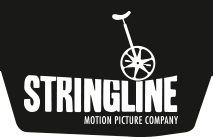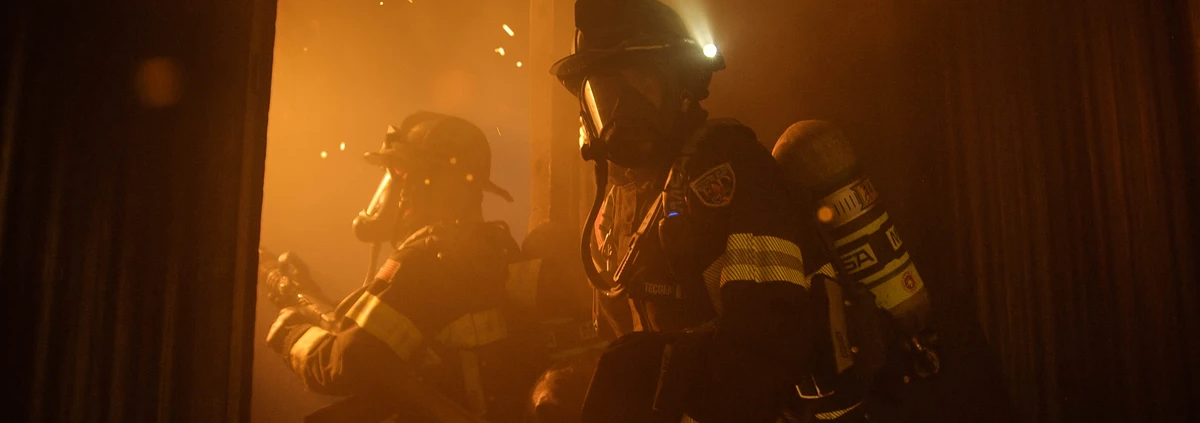Types of Camera Shots in Film: The Ultimate Guide for Filmmakers
Roger Deakins, Emmanuel Lubezki, and Hoyte van Hoytema all have one thing in common: they are some of the best cinematographers in the world. The only way to join their ranks is to learn everything there is about filmmaking, including camera shots.
A cinematographer, also called the director of photography (DP), is one of the most critical positions on a film crew. The DP collaborates with the director to manage each shot in a film and bring the director’s vision to life.
This comprehensive guide will introduce you to the most prominent types of camera shots and angles so that you can be on your way to mastering the art of cinematography.
What Are Camera Shots?
A camera shot is how much space exists in a particular frame of a film. Different camera shots can help portray certain emotions, emphasize relationships, or aid the storyline with foreshadowing. Typically, when shooting a scene, the DP needs to gather “coverage.”
Coverage is the combination of shots you need to gather for each scene to give the editor options in post-production.
The 5 Main Types of Shots in Film
Different camera shots change the size of the subject in the frame. From extremely close to very far away and everything in between, these five shots cover a lot of ground in filmmaking.
1) Close-Up
You’ve likely heard the famous line, “I’m ready for my close-up,” said by the character Norma Desmond in the classic film Sunset Boulevard. A close-up shot is a taken of the subject, either a character or object, at a close range.
If a close-up is used on an actor, it is often used to frame the subject’s face so that the audience can clearly see an emotion being portrayed. Close-up shots capture an actor from their shoulders up.
A close-up shot is used to clue the audience in to something they should pay attention to. For this reason, close-ups are also used on objects and settings that are important to the storyline.
Iconic Close-Up Shot: The Revenant (2015)
DP: Emanuel Lubezki

Image Source: http://www.tasteofcinema.com/2016/the-30-best-uses-of-close-up-in-cinema-history/
2) Medium Shot
A medium shot, also commonly referred to as a mid-shot or waist shot, captures a subject at a medium distance. If actors are in the frame, this shot typically captures them from the waist up. The mid-shot is a common camera shot used when two or more characters have dialogue. Framing the subjects in this manner allows the audience to see:
- Each character’s dialogue
- Facial expressions
- Body language
- Surrounding setting
Because the audience can see many important details of the story in this shot, medium shots are often nicknamed the “sweet spot.”
Famous Mid-Shot: Titanic (1997)
DP: Russell Carpenter

Image source: https://www.careersinfilm.com/types-of-shots-in-film/
3) Wide Shot
Wide or long shots help set the scene. This type of camera shot will include a large amount of the surrounding environment that the subject is in. Many films open with a wide shot of a specific setting to help set groundwork for the story.
If subjects are in the wide shot, the entire length of their body is shown. A character may be walking down the street, watching a sunset, or viewing art in a museum.
When this shot is used correctly, it can depict a sense of separation between the audience and the subject, making the audience feel like an on-looker in the character’s life.
Famous Wide Shot: Fight Club (1999)
DP: Jeff Cronenweth

Image Source: https://www.studiobinder.com/blog/wide-shot-camera-angles-movements-examples/
4) The Cowboy Shot
In modern filmmaking, the “cowboy shot” is popular. Cowboy shots are the happy medium between a mid-shot and a wide shot. It is larger than a medium shot but a little smaller than a full shot. Cowboy shots present characters in a heroic and confident manner.
The name “cowboy shot” comes from its use in old western films when filmmakers framed a cowboy from the hip up to showcase a gun or holster.
Modern Cowboy Shot: The Favourite (2018)
DP: Robbie Ryan

Image Source: https://www.riotmaterial.com/farce-of-imperial-pageantry-the-favourite/
5) Extreme Close-Up
When a character’s face fills up the entire frame, this is considered an extreme close-up. In an extreme close-up, an actor’s face may even be cropped just above the eyes and just below the mouth. These shots are used in highly emotional moments.
A character’s eyes can tell an entire story without any words needed. Extreme close-ups are a vehicle to see an actor’s performance in incredibly precise detail.
Famous Extreme Close-Up: Get Out (2017)
DP: Toby Oliver

Image Source: https://www.cinemablend.com/news/2306022/the-get-out-scene-that-made-jordan-peele-cry
6) Extreme Wide Shot
On the opposite end of an extreme close-up is an extreme long shot. In this camera shot, the subject is very far from view- so much so that they look very small in the distance. The environment or setting is the main focus in an extreme long shot, not the subject. This frame is used to demonstrate the sheer scale of what is happening in a scene.
Extreme long shots are great for depicting scenes like:
- Views of sunrises or sunsets
- People hiking through canyons
- A car driving down a long, country road
- A house in the middle of an abandoned area
- Fights on a battlefield
Famous Extreme Wide Shot: True Grit
DP: Roger Deakins

Image Source: https://nofilmschool.com/wide-shot-uses-and-examples
What About Angle Shots?
You may be thinking that the five camera shots we just explored can’t be the only shots used in filmmaking. And you’d be correct.
There’s an entire world of possibilities when it comes to camera shots, and these possibilities can be found in camera angles. For the five basic shots we covered above, it is assumed that the camera is shooting the subject straight-on at eye level.
Angle shots allow for different camera angles and placements. Angle shots aid in affecting the narration of the film, and they can be paired with the size of the frame achieved in a close-up, medium, or wide shot. Like how there are five main camera shots, there are also five standard camera angles.
1) Over-the-Shoulder
Over-the-shoulder camera angles are commonly used during dialogue between two characters. This shot establishes the eye line of each character and offers a unique perspective for the audience.
This angle is quite literally shot over the shoulder of one actor. The end result is one actor is framed in the center, while the back of the other actor’s head is in the periphery.
Effective Over-the-Shoulder Shot: Harry Potter and the Deathly Hallows: Part 2 (2011)
DP: Eduardo Serra

Image Source: https://www.imdb.com/title/tt1201607/mediaindex/?ref_=tt_mv_close
2) High-Angle
This cinematography technique captures a subject from above. When a DP uses this camera angle, it is often to portray a sense of:
- Vulnerability
- Powerlessness
- Weakness
- Danger
- Shock
While the high-angle shot is commonly used in horror films, it can also convey quirkiness. Acclaimed director Wes Anderson has a very distinct, eccentric style, and his films often feature high-angle shots.
Quirky High-Angle Shot: The Grand Budapest Hotel (2014)
DP: Robert Yeoman

Image Source: https://screenrant.com/grand-budapest-hotel-preview/
3) Low-Angle
Rather than shooting from above, a low-angle camera angle is achieved when the camera is positioned below the eye line level. The result of this angle makes it look like the audience is looking up at a subject.
The low-angle shot is versatile. In different settings, it can signify power and confidence, or vulnerability. Most commonly, the low-angle is used to exaggerate the height of a character or object.
Iconic Low-Angle: Reservoir Dogs (1992)
DP: Andrzej Sekuła

Image Source: https://moviesdrop.com/quentin-tarantino-trademark-trunk-shots-photos/4939/
4) Dutch Angle
As you increase your skills as a cinematographer, you may be able to execute the highly-stylistic Dutch angle. The Dutch angle, or tilt, is a very dramatic camera angle. To accomplish this angle, you need to tilt your camera to one side, creating an unlevel frame. This advanced camera angle helps create feelings of:
- Drama
- Distress
- Tension
- Suspense
- Thrill
- Disorientation
- Drunkenness
Classic Dutch Angle: Inception (2010)
DP: Wally Pfister

Image Source: https://www.studiobinder.com/blog/dutch-angle-shot-camera-movement/
5) Bird’s Eye
The bird’s eye angle is an aerial view shot. This angle is positioned high up, looking down at the action below. Modern technology allows cinematographers to capture bird’s eye angles with a drone.
Bird’s eye shots are excellent for films where the location is a pivotal part of the story. A drone can capture bridges, skyscrapers, battlefields, and everything in between.
Classic Bird’s Eye Shot: The Help (2011)
DP: Stephan Goldblatt

Image Source: https://www.imcdb.org/v450773.html
Organize Types of Camera Shots With a Shot List
Since all of these different camera shots can convey different emotions or aid the story in a helpful way, film directors and DPs will collaborate on a shot list before filming begins.
What is a shot list? A shot list is a document that keeps everyone on the production organized. It depicts the order of each shot that must be captured during each scene.
What is the purpose of a shot list? Shot lists help keep production moving according to schedule. When the crew knows a specific shot is coming up, they can be prepared to switch out camera lenses, adjust lighting, and call actors on time.
How do you create a shot list? Determine what kind of camera shots you want for a particular scene. When you write it down, it should include the following twelve elements:
- Shot number: Reference number assigned to the individual shot
- Shot description: Short depiction of the action or dialogue
- Shot size: The size of the subject in the frame (close-up, mid-shot, etc.)
- Shot type: The camera angle (eye level, low-angle, etc.)
- Movement: If the camera moves during the shot
- Equipment: Type of camera needed to capture the shot
- Lens: Camera lens needed
- Frame rate: Frequency at which the frames are captured
- Location: Where the shot is filmed
- Actors: Actors included in the shot
- Sound: How sounds and dialogue are captured (boom mic, individual mics, or both)
- Miscellaneous notes: Any extra notes for the crew to know about the shot
Create a Film You’re Proud Of
Whether you dream of winning an Oscar or you simply want to create a powerful promotional video for your company, camera shots and angles are an essential part of telling a fantastic story on film. Filmmaking takes a village, and even if you master the art of cinematography, you need a reliable team on your side.
Stringline Pictures is an accomplished video production agency that has brought countless stories to life across the country. From scriptwriting and location scouting to providing camera crews and masterful editing, our agency will travel across Minnesota and the entire country to produce first-rate videos for our clients.
Don’t keep your creativity hidden away. Contact us today to bring your vision to life.



